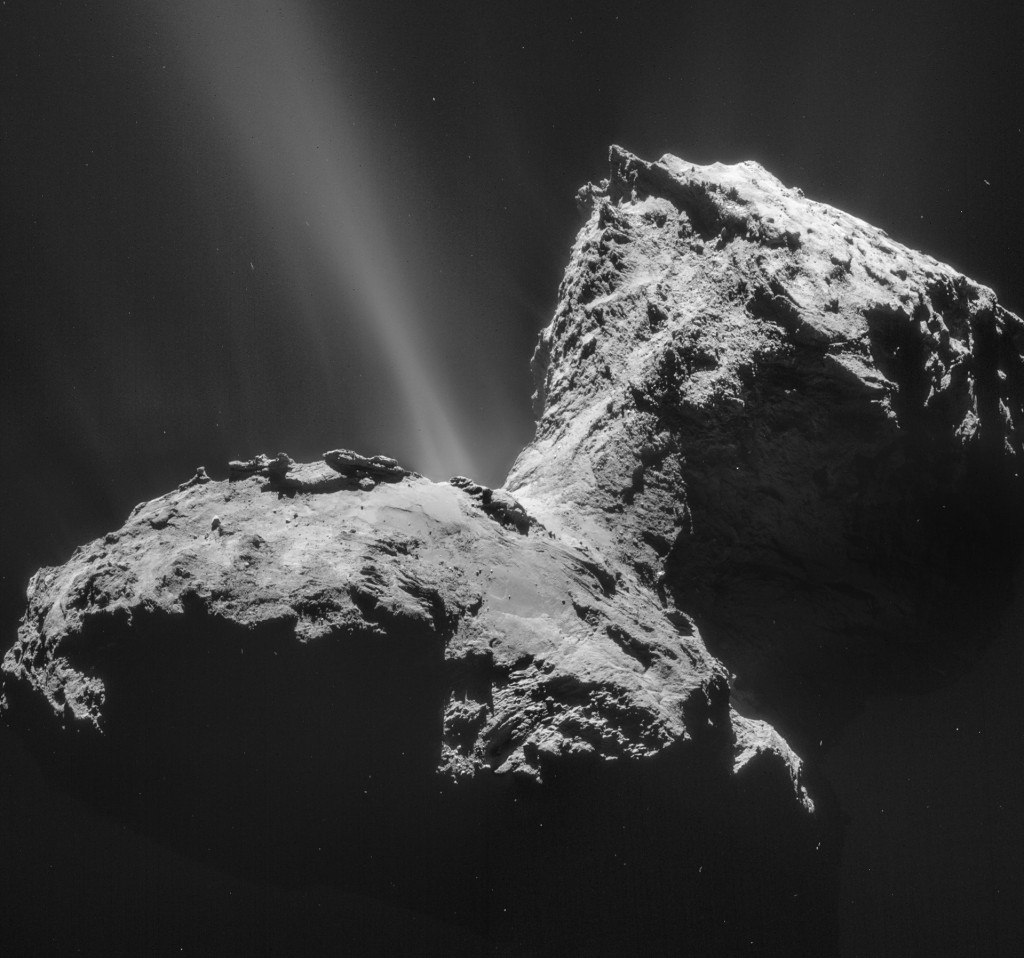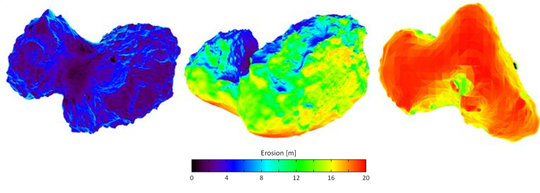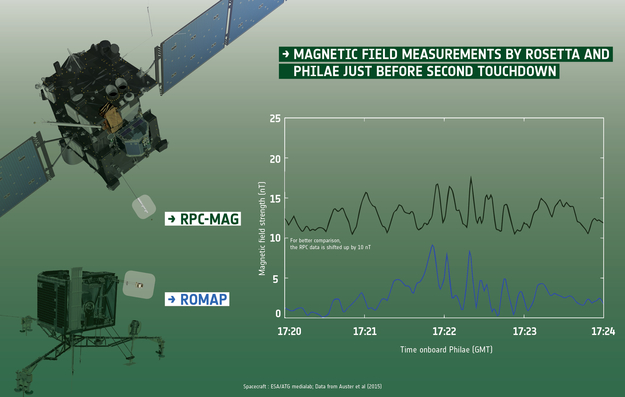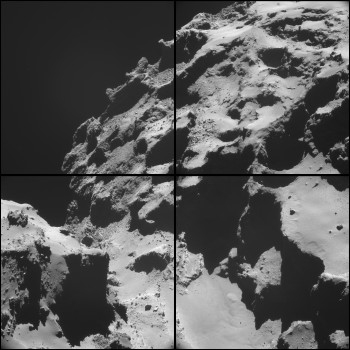Nature: Comet 67P/Churyumov-Gerasimenko sheds dust coat accumulated over the past four yearsESA: ROSETTA WATCHES COMET SHED ITS DUSTY COAT
26 January 2015
ESA’s Rosetta mission is providing unique insight into the life cycle of a comet’s dusty surface, watching 67P/Churyumov–Gerasimenko as it sheds the dusty coat it has accumulated over the past four years.
The COmetary Secondary Ion Mass Analyser, or COSIMA, is one of Rosetta’s three dust analysis experiments. It started collecting, imaging and measuring the composition of dust particles shortly after the spacecraft arrived at the comet in August 2014.
Results from the first analysis of its data are reported today in the journal Nature. The study covers August to October, when the comet moved along its orbit between about 535 million kilometres to 450 million kilometres from the Sun. Rosetta spent the most of this time orbiting the comet at distances of 30 km or less.
The scientists looked at the way that many large dust grains broke apart when they were collected on the instrument’s target plate, typically at low speeds of 1–10 m/s. The grains, which were originally at least 0.05 mm across, fragmented or shattered upon collection.
The fact that they broke apart so easily means that the individual parts were not well bound together. Moreover, if they had contained ice, they would not have shattered. Instead, the icy component would have evaporated off the grain shortly after touching the collecting plate, leaving voids in what remained.
By comparison, if a pure water-ice grain had struck the detector, then only a dark patch would have been seen. ...
Rita Schulz, Martin Hilchenbach, et al
Nature (2015) doi:10.1038/nature14159








